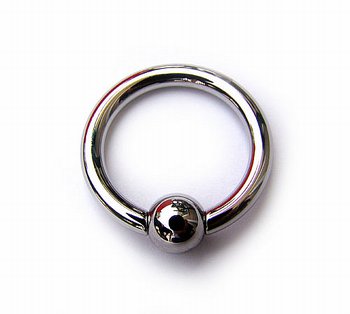Captive bead rings
Jump to navigation
Jump to search
A captive bead ring (or CBR) — also known as a captive ball ring, ball closure ring or BCR — is a ring used in body piercing where the bead is held in place solely by the spring pressure of the metal. It is probably the most common jewelry used in piercings.
A CBR is opened by using either hand pressure on smaller gauges or using ring openers for heavier rings. High-quality pieces have rounded ends to smoothly fit through the piercing and no gaps between the ring and ball which could catch or grab skin.
